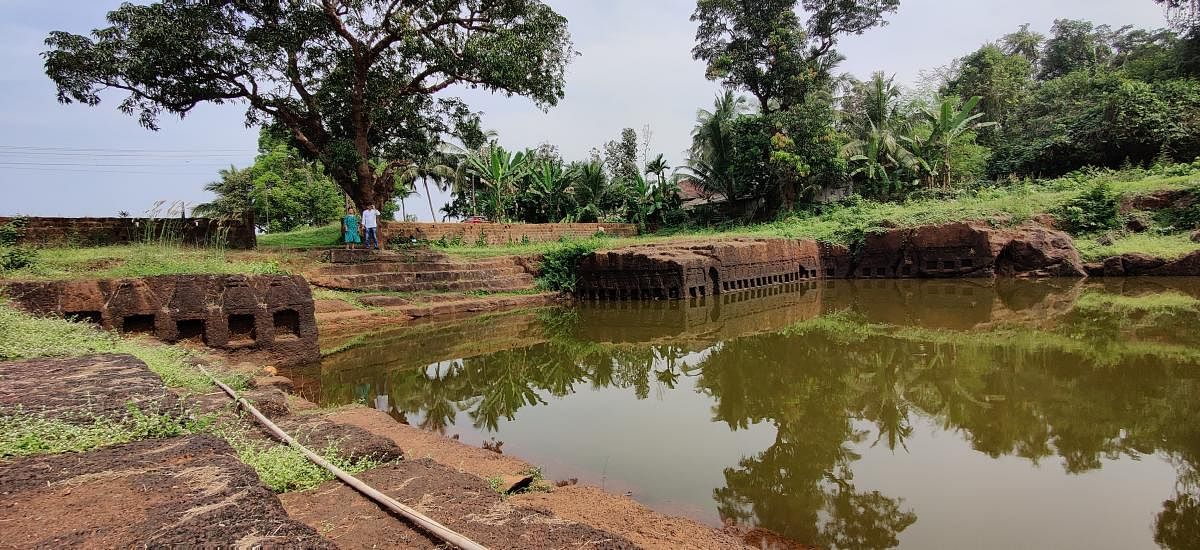A pond, a temple and Goa's Karnataka connection

A pond and a cemetery in Goa’s Diwar island show the old link between Karnataka and Goa.
The Koti Thirth Tali or Porne Thirth is a pond that has 108 carved hollows, with mini gopuram-like structures within. The rectangular pond is ringed by laterite-stone steps.
Visiting the place in November, the irregular-shaped pond was brimming with water and looked beautiful.
Historians say this is the kalyani (temple pond) of the Saptakotishwar temple, the family deity of Kadamba kings, who ruled the area between the 10th and 14th centuries.
The temple that was once present adjacent to the pond does not exist anymore. The site is archaeological proof of the once-thriving Kadamba era in Goa that transports us back in time.
Rohit Phalgaonkar, a Goa-based historian, says that there were two major temples in Diwar Island — the Saptakotishwar temple and the Ganapathi temple.
During the Bahamani rule of Allauddin Hasan Gangu that the Saptakotishwara temple was destroyed. This was rebuilt by Madhav Mantri, a minister in the Vijayanagar kingdom, in 1391 AD. This is documented in the copper plates of Vijayanagar, says Phalgaonkar.
However, in 1540 AD, the Portuguese destroyed the entire structure again. In 1558, the deity’s idol was shifted across the river to Bicholim, where another Saptakotishwar temple was established in 1668 by Chhatrapati Shivaji.
The pond, being a source of water, remained as it is. With time, some parts of it have weathered away. Since 2015, the locals have been congregating and lighting 108 lamps here to celebrate Saraswati visarjan. This is a structure now protected by the Goa government. The Ganapathi temple existed in what is now called Sao Mathias hill, near the Church of Our Lady of Piety.
Temple and church
“The remains of the older temple were found near this church, which has been documented by historians,” says Phalgaonkar. “The carvings, stone tracery and the ceiling of the chapel inside the cemetery near this church also date back to the Kadamba dynasty in the 14th century,” he adds.
When the shifting became inevitable, the idol in this Ganapathi temple was shifted to Khandepar in Ponda taluk and later to the nearby Khandola village.
The temple in Khandola houses the old idol from the Diwar as well as a new one. The locals have now built a new Shakti Ganapathi temple near the Sao Mathias temple.
Originally named Diwaddi, meaning an island of settlements, Diwar island has many historical remains of religious significance and age-old churches, which are now closed due to Covid-19.
The island itself is divided into three villages – Piedade, Malar and Naroa. Naroa has Koti Tirth Tali and the Sao Mathias church.
The island is about 10 km upstream from Panjim and a drive inside makes for a fascinating journey with its maze of meandering roads, all nestled amid the water and the land.
Deccan Herald is on WhatsApp Channels| Join now for Breaking News & Editor's Picks